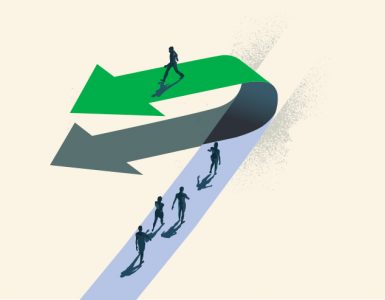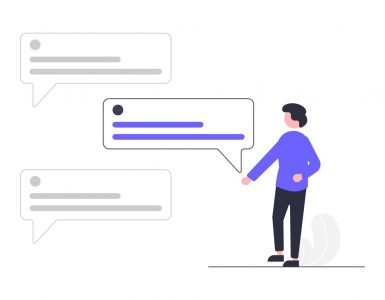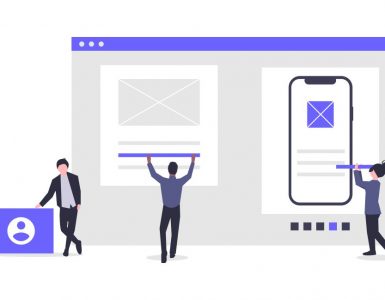With algorithms now automating much of a recruiter’s grunt work, the big sell from HR Tech is the drastic time-save on hiring’s most cumbersome manual tasks. So just how much time has been saved, and where? And at what rate?
There is one common motivator when it comes to implementation, or integration, of a new Talent Acquisition Suite: saving as much time as possible in hiring the best person for a job. SmartRecruiters’ job is making that process as easy and accurate as possible. We call it hiring velocity.
But going from posting a job to signing a contract is a multistep process. For companies to tinker, tweak, and optimize, there are several time-bound issues to consider, even after SmartRecruiters’ Talent Acquisition Suite has automated the initial cull.
Kathy Moening, marketing manager at Click Boarding says, “The handoff from SmartRecruiters’ TAS to the business is a critical component of the hiring process that helps increase retention rates, boost engagement, and drive hires to productivity faster. Any lags in that handoff can have a negative impact on the hires’ experience, their performance over time, and a business’ bottom line.”
We agree, and wanted to be able to back it up with numbers. So we compiled the 30,000 candidates who were offered a job, then hired by SmartRecruiters customers in 2017 – small, large or enterprise companies – to better understand the biggest lags to onboarding once the TAS had done its job. To keep the charts clean, we discounted the most extreme/outlying cases. Hiring processes that took more than 60 days fell out of ideal range, and were also excluded.
The first chart below represents the overall number of days that hired candidates spent in each of the four stages of the hiring process – New; In Review; Interview; Offer.
Whether calculated by average or median, each of the four hiring stages took relatively similar times in relation to each other, but as it discounts extreme cases, the median better reflects reality, where candidates’ applications spent one day at the New stage of submitting the CV/application – three days in Review, after which it took nine days to conduct an Interview, and a further six to be made an Offer.
In all cases the interview stage took the longest, but for companies in the fastest 25 percent to hire, the New and In Review stages took less than a day, an Interview was initiated three days later, and an Offer came the next day.On the other hand, the 10 percent of companies that took the longest to hire, it took 11 days for an application to be seen, 18 days to be reviewed, 30 more to schedule an interview, and a further 26 to make an offer.
Number of days spent in intake stages by hired candidates – overall stats
[foogallery id=”36773″]
Number of days spent in stages by hired candidates – by location
Unsurprisingly, size was a factor and hiring took longer with enterprise customers as opposed to the smaller entities. The chart below shows which major regions get through each hiring stage at what pace.
France and Australia were the longest to review applications at five days, and the UK the shortest at two. The fastest was Canada at seven days, while the quickest offers were made in the United Kingdom and Canada, at two days and one day respectively. Initially, we thought the Canadian numbers might be skewed by some large clients known for seasonal hiring bursts. But our analyst explains that we pulled “data from 2000 companies across Canada, 50 of which were corporate customers,” and, “in Canada, the corporate recruiting function is more ensconced, and focused on improving the Time To Hire metric,” explains Paul Dodd, head of Canadian engagement at WilsonHCG. “Plus, it’s a tight talent market, so if you don’t get it right, you will get second-tier talent.”
France was by far the longest to schedule an interview at 14 days.
[foogallery id=”36775″]
Number of days spent in subsequent stages by hired candidates – by industry
Breakdown of data per industry, much like that of job function, confirms that hiring processes are the longest in Information Technology, and the fastest in Education Management.Here, Retail enters the picture, a sector quick in making offers, due to both volume and, with many of those customer-facing positions, relatively lower skills required.
“Retail tends to have a significant low value/high volume hiring profile,” explains WilsonHCG’s Dodd. “That predicts there are some significant efficiencies to be gained through automated selection questions, and then some rudimentary assessment of competencies.
“In regards to tech, there are a ton of aptitudes, skills and knowledge that needs to be verified, and depending on the latest & greatest profile, with things like java stack or hadoop, your talent pool is small. Any one professional would possibly have two or three offers so if you aren’t fast enough, the opportunity cost for not having them on your team could be significant.”
[foogallery id=”36777″]
Number of days spent in stages by hired candidates – by the source of candidate
In the graph below, it may seem surprising that hiring processes for referral candidates and internal candidates take more time than for external candidates. This could mean that internal candidates are seen as already being in the system, thus no need to rush in getting them interviewed, which makes them the least urgent group.
“This is a huge miss,” says Click Boarding’s Moening. “Current employees can make, or break, your hiring game. Provide them with the same level of care and attention as new hires during the hiring and onboarding process – and they’ll become champions for your business and your brand. Treat them as less urgent, and they’ll go find someone that’ll treat them better.”
[foogallery id=”36779″]
Number of days spent in stages by hired candidates – by mobile app usage
When it comes to recruiters or hiring managers using our mobile app, we found processes were usually two days shorter compared to those using only on a desktop/laptop . The implications are obvious: recruiters and hiring managers want software like SmartRecruiters to be so high-performing, that they can perform their tasks, on the go, in the palm of their hand.
“After speaking with multiple talent acquisition leaders,” says Tracey Oyuela, head of marketing at TextRecruit, “we were shocked to uncover the number of text messages between recruiters and candidates. The feedback was that texting was an effective communication tool with prospects, but there was no technology for teams to organize, send and track messages to candidates.”
While TextRecruit has managed to automate that process, RecruitingDaily president, William Tincup, laments, “I think most recruiters would prefer to pick up the phone and call, but you can’t get candidates on the phone nowadays. If they see a number they don’t recognize it’s straight to voicemail – and who checks voicemail?”
[foogallery id=”36781″]
Number of days spent in stages by hired candidates – versus rejected candidates
Although it may seem counterintuitive, it typically takes more time to reject a candidate who, although good enough to invite for an interview, was not hired, than it does to hire a candidate after they’ve had an interview. While we may tend to think it would take more time to choose just the right candidate, our research skews more towards knowing a candidate is the perfect fit, SmartRecruiters filters having provided a higher quality candidate selection, sooner.
[foogallery id=”36783″]
Based on all jobs posted by our customers, interviews are the longest step in the hiring process, because they contain, on average, 2.9 steps, whether it’s going through more than one interview round, discussion between company employees about the candidate in question, or seeking hiring approval from executives. More than 40 percent of candidates have two or more interviews before being hired. 2.7 percent have five or more interviews, and the average number of interviews per candidate is 1.7.
For larger companies, the hiring stages are more complex than one might think, and finding ways to close gaps is going to give great competitive advantage, but only to those who take the time to figure them out and recalibrate where necessary.
“This data shows that hiring velocity, particularly in the latter stages of the recruiting process, can be a real competitive advantage,” says Lars Schmidt, HR veteran and founder of Amplify. “As companies in this data set have 6-8 day windows for key highly competitive hires (Engineering, IT, Sales), nimble companies who can move quickly from final interviews to offers have a real advantage.”





























